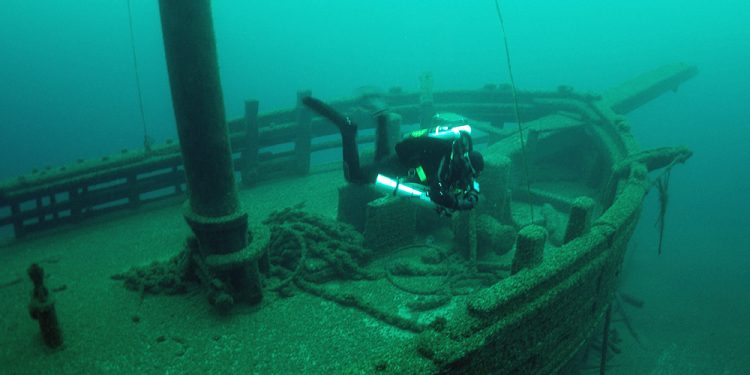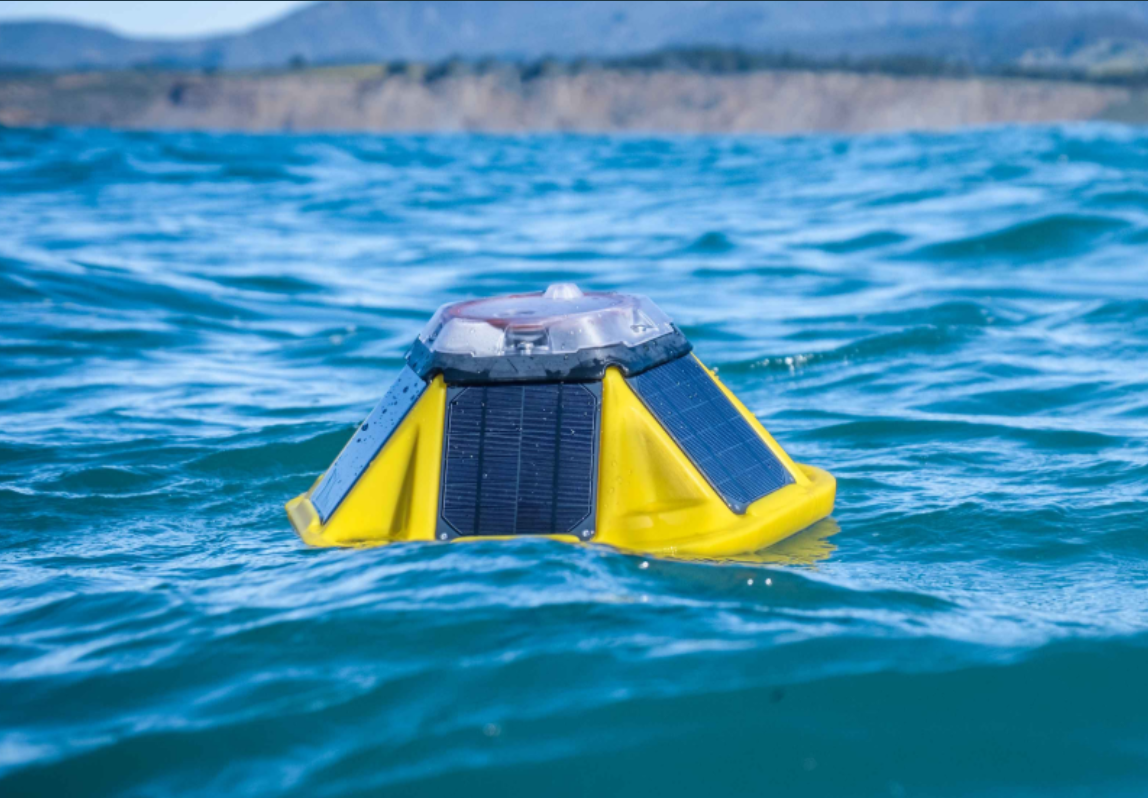
It’s been a long road, but the NOAA Wisconsin Shipwreck Coast National Marine Sanctuary (WSCNMS) was designated in June, and, after a 45-day review period, it will become effective. And the 962 square mile sanctuary that stretches from Port Washington to Two Rivers will soon have three new buoys.
NOAA’s National Marine Sanctuary program exists to protect shipwrecks and areas of maritime heritage. Nominated in 2014 by local communities and the State of Wisconsin to become a national marine sanctuary, the WSCNMS is home to 36 known shipwrecks (plus around 60 yet to be discovered) and is also a busy area for shipping, boating, diving, and fishing. This is the second Great Lakes sanctuary in the National Marine Sanctuary system and the 15th to be established in the national network of underwater parks and national monuments.


The sanctuary is a relatively under-observed area, leaving gaps in scientists’ and forecasters’ understanding of lake dynamics and their potential future effects on coastal communities. That is why, this year, GLOS funded this project through a Smart Great Lakes mini-grant.
“At GLOS, we continually seek opportunities to help fill gaps in the region’s observing system,” says Kelli Paige, CEO. “It’s an added bonus that through this partnership, we can help welcome and protect this new marine sanctuary, making these buoys all the more valuable to the Great Lakes.”
Russ Green, the Great Lakes Regional Coordinator for NOAA Sanctuaries, says that the sanctuary designation for the WSCNMS opens the door for resources to come to the community to support, not just the protection of the shipwrecks, but also heritage tourism, recreation, and Lake Michigan conservation.
“These buoys are off-the-shelf and are relatively easy to deploy. In a small, cost-effective footprint, you get outsized benefits,’” says Green. “And national marine sanctuaries are really good at finding outside resources and creating the partnerships needed to make projects like this work for multiple users.”
To Green, the buoys are a great example of the effect of sanctuaries on an area. These three will deliver real-time, actionable information on the wind, waves, and water temperature at various depths.
Green and collaborators at NOAA Great Lakes Environmental Research Lab (GLERL) and the Cooperative Institute for Great Lakes Research (CIGLR), including Steve Ruberg, Russ Miller, and Hayden Henderson, hope to have the buoys in the water by late summer.
Once the buoys are deployed, information will be available through GL Buoys to improve safety of boaters, paddlers, divers, beachgoers, and more. The buoys will provide helpful water column temperature data to aid commercial and recreational anglers, and will feed into predictive models run by NOAA that forecast water and weather conditions.
“Driven by common meteorological events and prevailing winds, there are interesting physical and chemical phenomena that occur across the WSCNMS’s span of Lake Michigan, such as coastal upwellings,” says Henderson. “These buoys are an incredibly high value item for better understanding these events.”
The data will also be available from GLERL and the National Data Buoy Center.
Because these buoys are small and easy to deploy—about twice the size of a basketball—the team hopes to eventually find local partners to help deploy and recover them each year.
For more information, contact Russ Green at russ.green@noaa.gov.
To see the same type of buoy, check out this video, and see similar live data here.